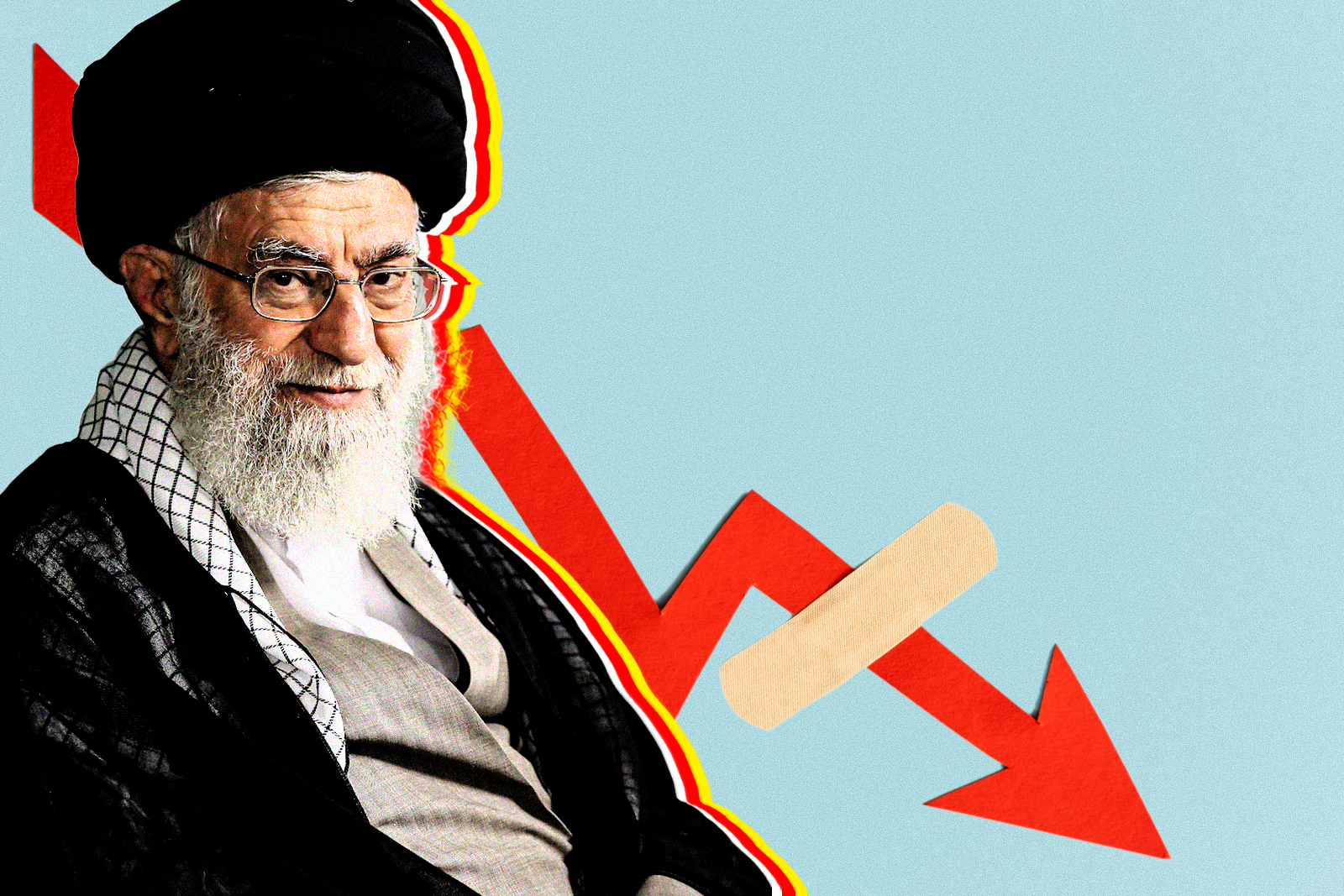
Iran’s Fiscal Budget: Adapting to Prolonged Economic Sanctions
On March 21, a cultural dichotomy was cast in sharp relief against the backdrop of the Persian New Year, Nowruz, which, in a twist of the calendar, dovetailed with the commencement of Ramadan. In Iran, a nation in the throes of a profound secular transformation, this overlap has crystallized the fissures between the theocratic rulers and an increasingly secular populace. The government and its adherents have doubled down on religious observance, notably fasting during the holy month. In contrast, a growing secular contingent has embraced Nowruz celebrations, some flouting Ramadan’s dawn-to-dusk abstinence with unprecedented openness.
Yet, beneath the surface of these cultural cleavages lies a unifying thread of economic angst, pervasive among both the citizenry and the ruling class. Iran’s economy, beleaguered by sanctions and suffering from rampant inflation, unemployment, and poverty, has stoked universal concern. The government’s fiscal budget, hotly contested among the ruling elite’s factions, reflects the tension at the heart of Iran’s policy-making: balancing the imperative to reduce the national budget deficit against the socioeconomic needs of a populace dependent on government support and subsidies. The sanctions-induced atrophy of oil revenue only exacerbates the challenge of steering the nation through fiscal shoals. As such, Iran stands at a crossroads, its future course charted between the Scylla of economic hardship and the Charybdis of socio-cultural evolution.
The Iranian government has ratified its budget for the forthcoming fiscal year, marking a continuation of the austerity measures that President Ebrahim Raisi’s administration has adopted. These measures were introduced two years prior, acknowledging the grim prospect that the economic sanctions, which have severely constrained Iran’s oil export capabilities, show no signs of abatement. This fiscal tightening aligns with the regime’s recognition that its sources of international revenue will remain compromised.
At the core of this acknowledgment is the understanding that the tensions between Iran and the United States, compounded by adversarial postures toward Israel, are not on course for resolution. Iran’s Supreme Leader Ali Khamenei’s stance is resolute: reconciliation with the U.S. appears to be a diplomatic cul-de-sac, foreclosing prospects of economic relief in the near term. The shadow of the 2024 U.S. presidential election looms large over Tehran, with concerns that a potential return of Donald Trump to the Oval Office could spell even more stringent sanctions. This scenario contributes to the regime’s strategic fiscal conservatism, as it braces for continued economic isolation.
In a strategic pivot shaped by geopolitical currents, Khamenei promulgated a decree in 2022 mandating the Iranian government to curtail the nation’s fiscal reliance on fluctuating oil export revenues. This directive was in part a direct consequence of the erosion of oil income following the Trump administration’s 2018 unilateral withdrawal from the Iranian nuclear deal negotiated with the Obama administration in 2015. After this withdrawal, Iran’s oil revenues plummeted to a mere 7% of its total fiscal revenues by 2018—a stark contrast to the 30% share recorded in 2016.
The intervening years have witnessed a modest recovery, with the oil revenue ratio rebounding to 25% in 2021, although falling short of that year’s projected 35%. In adherence to Khamenei’s decree, the forecasted oil revenue for the fiscal year 2024 has been prudently set at 23%. This recalibration of economic expectations, informed by the sustained volatility of oil markets and a dim outlook for detente with the United States, has reverberated through Iran’s fiscal policy, steering the nation towards a more conservative economic posture.
The Iranian government’s fiscal policy for the 2024-25 period reflects a deep-seated pessimism regarding the mitigation of tensions with the United States, as well as a pragmatic approach to the instability of oil revenues witnessed over the past three years. Initially, authorities have persisted with the policy of securing substantial loans from the central bank, resulting in continued growth of the money supply, albeit without an acceleration of its pace. Although the annual inflation rate has remained staggeringly high, ranging between 35 to 45 percent, the administration has defended its fiscal conduct by highlighting that, contrary to previous patterns, the inflation rate has ceased to climb and has seen moderate declines in recent months. However, the lack of corresponding wage increases has led to a decrease in the purchasing power of numerous households, consequently elevating the percentage of the population falling beneath the poverty line.
Subsequently, the government has embarked on a substantial overhaul of the tax system, implementing raised tax rates alongside more efficient tax collection mechanisms. These reforms have produced a significant augmentation in tax revenues, witnessing an average annual increase of 50 percent, which has outstripped the prevailing inflation rate. The sanctioned budget for 2024 anticipates a further escalation of tax revenues by 49 percent.
Despite the revenue upsurge serving to constrain the budget deficits, economists harbor concerns regarding the potential pressures this will exert on consumers and private enterprises. They harbor particular apprehensions about the planned increment in the value-added tax, escalating from 9 to 10 percent. As the VAT affects a broad spectrum of consumer goods with minimal exceptions, this uptick is anticipated to further strain the finances of low-income households.
Additionally, the 2024 budget law stipulates a substantial capital gains tax for the short-term trading of durable goods and gold coins—a sector traditionally utilized by many middle-class Iranian families to augment their incomes and protect their savings against inflation. These households will now confront an elevated transaction tax should they choose to trade these commodities within a one-year timeframe.
The commercial and industrial sectors express similar concerns over the burgeoning tax burden. The augmented VAT rate is poised to erode the purchasing power of their consumer base, while the weight of corporate income tax has simultaneously intensified. On one front, the government has integrated new digital technologies to curtail income under-reporting and tax evasion by businesses. On the other, incessant inflation is propelling even medium and small enterprises into higher income tax brackets. Further exacerbating the situation is the elimination of a 5 to 7 percent tax rate deduction for corporations engaged in industrial or agricultural endeavors, a provision that was rescinded in the 2024 budget law.
Moreover, the rate of increase in government expenditures has been deliberately maintained below the inflation rate, which has resulted in a de facto reduction in total government spending in real terms after accounting for inflation. This austerity has had repercussions across the spectrum of government spending, but the impact has been particularly severe on the funding of development projects. The 2024 budget illustrates a stagnation in the development budget, which implies that even under the most optimistic scenario projecting inflation to recede to 30 percent, the real value allocated to development will experience a considerable contraction.
Over the last decade (2014-2023), the capital budget constituted an average of 18.3 percent of the total budget; however, in the 2024 plan, it has been diminished to 14.6 percent. For the thousands of businesses and industries that rely on government contracts for a substantial portion of their income, this downturn portends a significant reduction in revenue. This reduction is also expected to impede the progression of numerous critical infrastructure projects, which are essential for the long-term economic growth of the nation.
A further dimension of austerity has been the government’s prioritization of budgetary allocations for defense and security institutions. A notable manifestation of this selective strategy is a clause in the 1403 Budget law, which mandates the oil ministry to allocate a quota of crude oil production to the armed forces for direct export. This legislation empowers the armed forces, and in particular, the Islamic Revolutionary Guards Corps (IRGC), to independently oversee the marketing and sales of these oil exports and to retain the revenues therein. This stipulated quota is approximately 20 percent of Iran’s projected oil exports for the 2024 fiscal year. Although the IRGC has historically engaged in the covert export of crude oil to circumvent the sanctions, this fiscal budget marks the first official recognition of its role in Iran’s sanctioned economy.
The 2024 budget underscores the Iranian government’s commitment to sustaining its austerity measures as a form of economic defense against ongoing sanctions and other external fiscal pressures. This strategy has been meticulously crafted to ensure the regime’s endurance against both external and internal challenges. Certain fiscal reforms, such as enhancing the efficiency of the tax collection system, echo strategies long recommended by the International Monetary Fund to developing nations.
Iranian policymakers have long recognized the necessity for a disciplined fiscal approach to manage high inflation, yet they have grappled with the political ramifications of spending cuts. The unrelenting force of economic sanctions ultimately impelled the adoption of the current austerity measures. While a majority of Iranians would favor a fundamental recalibration of the Islamic Republic’s foreign policy to facilitate the lifting of sanctions, the ruling elite is instead preparing the economy for an enduring state of economic conflict, including the potential for more severe sanctions from the United States.
Concurrently, Iran’s governing forces remain acutely conscious that these policies may elevate the risk of mass demonstrations and political instability. They continue to fortify the financial resources of the security apparatus and institutions aligned with regime loyalists to safeguard against the possibility of domestic dissent and external adversities.

